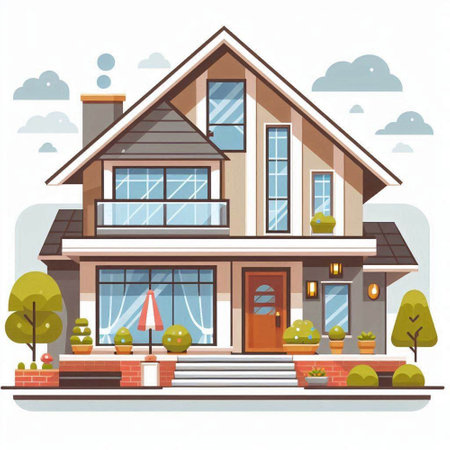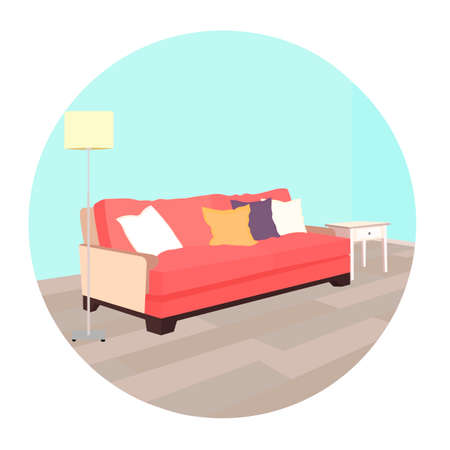Understanding the Value of Staging
When it comes to selling an outdated home, staging is a powerful tool that can make all the difference. Many homeowners assume that only major renovations can attract buyers, but in reality, thoughtful staging can help highlight a property’s strengths and downplay its flaws without breaking the bank. Staging isn’t about masking problems; it’s about helping potential buyers see the possibilities and envision themselves living in the space. In today’s competitive real estate market, first impressions matter more than ever. A well-staged home creates a welcoming atmosphere, allowing buyers to focus on the home’s potential rather than its dated features. By arranging furniture, adding neutral decor, and maximizing natural light, you can influence buyers’ perceptions and even increase the likelihood of receiving higher offers. Ultimately, staging bridges the gap between an older home and a buyer’s modern expectations, making it easier for your property to stand out—without expensive remodels.
2. Declutter and Depersonalize
One of the most effective ways to stage an outdated home without investing in major renovations is to declutter and depersonalize each room. Potential buyers want to envision themselves living in the space, and that’s difficult if your family photos, collectibles, or piles of paperwork are front and center. Start by removing all personal items, such as photographs, awards, kids’ artwork, and any memorabilia that could distract from the home’s features. Aim for a neutral and inviting environment that appeals to a wide range of buyers.
Why Decluttering Matters
Too much clutter can make rooms look smaller and less functional. By clearing surfaces—think countertops, shelves, and coffee tables—you instantly create a sense of openness and cleanliness. Pay special attention to high-traffic areas like entryways and living rooms. Don’t forget closets and cabinets; buyers are likely to peek inside and assess available storage space.
Simple Steps to Declutter
| Area | What to Remove |
|---|---|
| Living Room | Excess furniture, magazines, remote controls, personal photos |
| Kitchen | Small appliances on counters, refrigerator magnets, unused utensils |
| Bedrooms | Toys, laundry baskets, extra pillows/blankets not used for staging |
| Bathrooms | Personal care products, rugs (unless new), decorative clutter |
Depersonalizing for Mass Appeal
The goal is to help buyers picture their own lives in your home. Replace bold or personalized décor with simple artwork or neutral accessories. A few well-placed items—a vase of fresh flowers or a stylish lamp—can make a room feel warm without revealing too much about the current owners. Remember: Less is more when it comes to staging.

3. Highlight Architectural Features
One of the smartest strategies for staging an outdated home is to spotlight its unique architectural features. Instead of letting buyers focus on elements that may look dated, shift the attention to what makes your property special. Does your home have original hardwood floors, detailed crown molding, arched doorways, or a classic fireplace? Use strategic lighting, minimal yet tasteful décor, and neutral color palettes to accentuate these attributes. For example, clear away clutter from window seats or built-in bookcases so their craftsmanship shines through. Place a simple vase or a cozy chair near a bay window to draw eyes toward it. Even if your kitchen cabinets are older, highlighting high ceilings or vintage tilework can help buyers see potential rather than problems. Remember, todays buyers often appreciate character and charm—emphasize these strengths so viewers remember what sets your home apart.
4. Simple Cosmetic Updates
One of the most effective ways to stage an outdated home without a major renovation is to focus on affordable cosmetic updates. These small changes can significantly improve a homes appearance and make it more appealing to potential buyers. Instead of gutting kitchens or bathrooms, consider giving tired spaces a quick facelift with a few strategic swaps and enhancements.
Easy and Budget-Friendly Upgrades
Sometimes, all a room needs is a new coat of paint or updated hardware to feel fresh and inviting. Choose neutral paint colors like soft gray, beige, or white to help rooms look larger and brighter. Swapping out old cabinet knobs, drawer pulls, and light switch covers for modern alternatives can also make a big difference at a low cost.
Popular Cosmetic Updates
| Update | Estimated Cost | Instant Impact |
|---|---|---|
| Fresh Paint (per room) | $50-$100 | Brightens & modernizes space |
| New Cabinet Hardware | $20-$60 | Makes kitchens/baths feel updated |
| Modern Light Fixtures | $40-$150 | Adds style & improves lighting |
| Updated Switch Plates & Outlets | $10-$30 | Cleans up walls & adds polish |
Quick Tips for Maximum Effect
- Focus on high-traffic areas like entryways, kitchens, and bathrooms for the greatest impact.
- If you have dated tile or countertops, use peel-and-stick contact paper as a temporary solution.
- Replace old faucets or showerheads with sleek, budget-friendly options for an instant refresh.
These simple cosmetic updates allow you to modernize your home’s look without breaking the bank or committing to major renovations—making your property more attractive to today’s buyers.
5. Strategic Furniture Placement
When staging an outdated home without major renovations, how you arrange your existing furniture can make all the difference. Smart furniture placement allows you to showcase each rooms full potential, making spaces feel larger, brighter, and more inviting—even if the finishes are dated. Start by decluttering and removing any unnecessary or oversized pieces; this helps open up walkways and creates a better flow throughout the home. Arrange sofas and chairs to encourage conversation and highlight focal points like a fireplace or large window. Use area rugs to define spaces within open-concept rooms, and avoid pushing all furniture against the walls—floating pieces can make a space look thoughtfully designed. Don’t be afraid to repurpose items; a small table in the entryway or a cozy reading nook in an unused corner can add function and charm. Remember, buyers want to imagine themselves living comfortably in your home, so create a layout that feels welcoming, functional, and easy to navigate using what you already have.
6. Maximize Curb Appeal
First impressions matter, especially when selling an outdated home. You don’t have to invest in major exterior renovations to make your property stand out—simple, strategic updates can create instant curb appeal and set a welcoming tone before buyers even step inside. Start with landscaping: mow the lawn, trim bushes, edge flower beds, and remove weeds or dead plants. Adding fresh mulch and planting seasonal flowers or greenery near the entryway can instantly boost visual interest. Next, focus on the front porch or entry area. Clean the walkway and steps, sweep away debris, and consider adding a new doormat. If your budget allows, update house numbers or install a modern mailbox for a subtle touch of style. Freshen up the front door with a coat of paint in a bold yet classic color like navy blue, deep red, or charcoal gray—this small change can make the entrance pop against an older facade. Add inviting accents such as potted plants, a tasteful wreath, or outdoor seating if space permits. Finally, check that all exterior lighting is working properly; consider updating old fixtures for better illumination and a more contemporary look. By focusing on these attainable improvements, you’ll maximize curb appeal and ensure your outdated home makes a strong first impression without breaking the bank.
7. Focus on Lighting and Ambiance
One of the easiest and most affordable ways to update an outdated home is by improving its lighting and overall ambiance. Good lighting can instantly make a space feel larger, cleaner, and more modern—without any need for major renovations. Start by maximizing natural light: open curtains or blinds during showings and consider swapping out heavy drapes for lighter fabrics that let the sunshine in. If rooms are still dim, layer in additional light sources such as floor lamps, table lamps, or even stick-on LED puck lights inside closets and dark corners.
Next, replace old-fashioned or dingy light fixtures with simple, contemporary alternatives. Even inexpensive new shades or bulbs with a warmer color temperature can make a big difference. Don’t overlook details like clean switch plates and dust-free bulbs; these small touches contribute to a fresh look.
To create a welcoming atmosphere, use warm-toned bulbs instead of harsh white lights. Strategically place lamps to highlight attractive features or create cozy reading nooks, especially in living areas and bedrooms. Candles and subtle string lights can also add charm without overwhelming the space. Finally, pay attention to scent: a lightly scented candle or plug-in air freshener helps make the home inviting to potential buyers. By focusing on lighting and ambiance, you can transform outdated rooms into spaces that feel comfortable, stylish, and move-in ready—all without a major investment.


